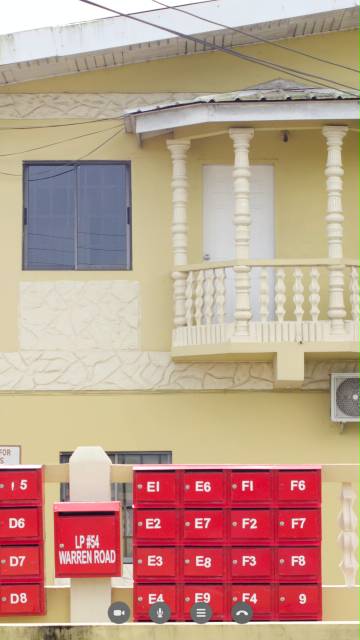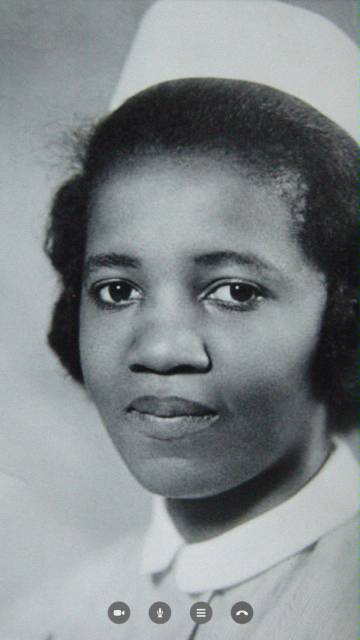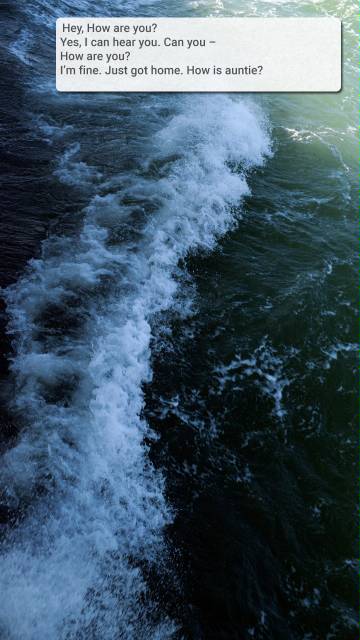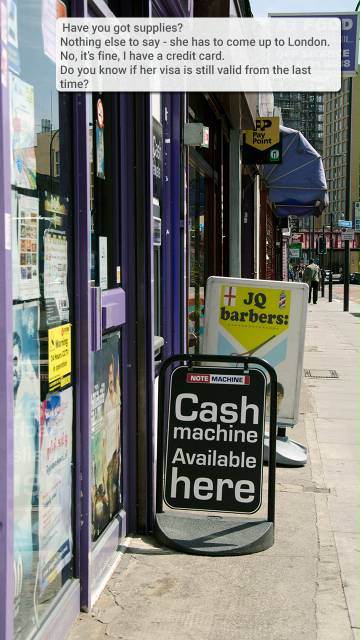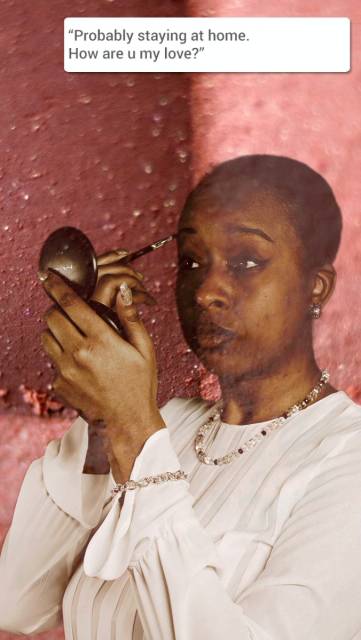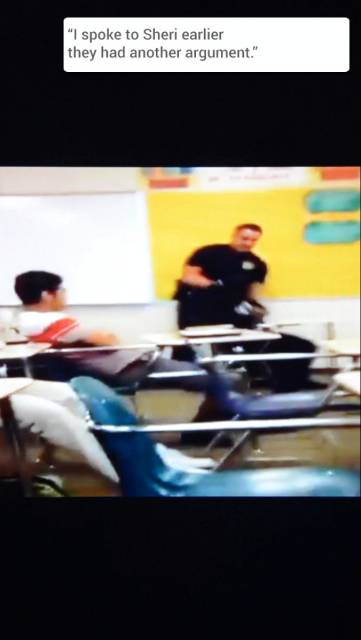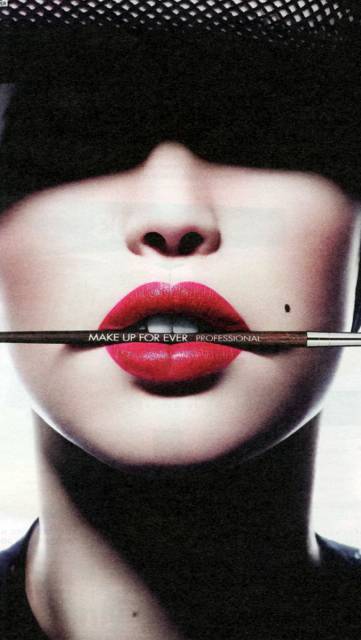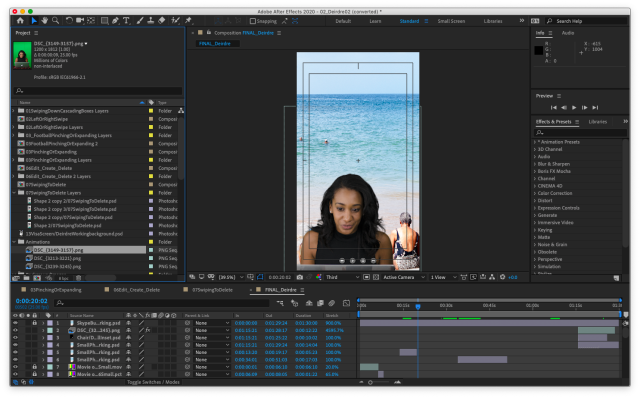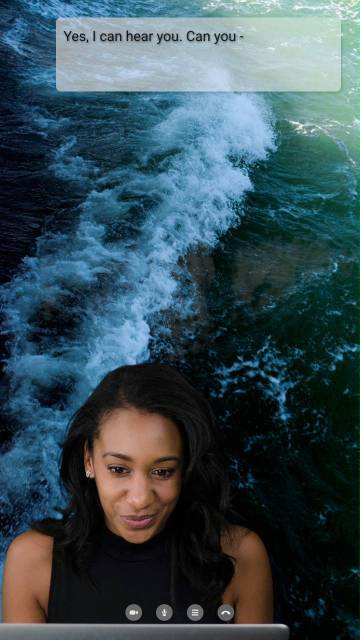Project narrative
The project grew out of four corresponding areas of interest: research into the behaviour of travellers using smartphones on London public transport; observing and researching conventions associated with creating selfies; overhearing and listening to the kinds of stories/narrations being communicated in public places; and research into the formats and content of smartscreen technology based on commuters’ usage in public spaces such as train and underground stations. As a supercity, London offered public places as spaces of embodied research practice. Through close observation of smartphone use, screen functionality evident in those public places and research into conventions for taking digital selfportraits, my project aimed to shed light on the diasporised, migratory self as a racialised and subaltern experience in urban life.
My aim was an artwork comprising six silent, screen-based digital videos appearing as a single projection in the gallery space, accompanied by digital photographic prints.
Realisation of the work involved:
- Acquiring skills and knowledge around stop animation and texts designed and created for animation; postproduction techniques; software design and creation of digital photomontage prints.
- Recruitment of actors for green-screen studio film work; collaboration with a writer and software programmer/designer to develop a prototype and knowledge base; we exchanged expertise via workshops, online studio environments and networked meetings.
- Reconceptualising material gathered from close observation of smartphone use and screens in public spaces as artistic processes as outlined above.
Visual communication
From early in the project, the aim had been to produce a digital work that extends the photographic form via screen-based animation and projection. I conceived of the smartphone as a space primarily of visual communication and messaging was part of that, with short texts appearing only briefly. In the initial stages, I also considered using sound, as well as different interactive options, physical components and multi-screen projections, but these ideas came and went throughout the project’s development.
Ultimately the work produced a significant advance in video-editing techniques that appear as adaptations and extensions to smartphone conventions of movement and aesthetics. It also advanced the development of shortened conversational fictional writings as text-messaging animations.
Content development
In the first stages, I mapped out with Erica Masserano, the writer, a range of potential urban locations from which to develop the characters for each narrative. The fragments of overheard conversation also formed the basis of the narratives. This was enhanced by gathering statistics associated with the social afflictions of urban life, uncovering the inequalities between rich and poor. The Grenfell Tower fire, the refugee camps in Turkey that were home to more than 200,000 displaced persons in 2014, and the unprecedented numbers of trafficked persons crossing the Mediterranean were, to me, examples of the violent conditions forced on black people.
Central to my research were the experiences of working people who have migrated to the city, and in particular persons of colour, who are often disenfranchised and displaced through poor access to healthcare, housing, education, professional training and work; and an inability to escape violence and the threat of incarceration. Masserano produced short fictional texts that were stylistically in keeping with messaging, tweeting and other practices associated with quick smartphone communication.
The imagery built on my layering and photomontage approach to creating digital photographs. In photographing actors in the green-screen studio using 35mm digital cameras, representations of characters were montaged using location photographs as backdrops. We created silent digital videos comprising stop animations of photographs and texts moving at 12 frames per second.
Programming development
The software design and programming centred on developing visual, editing and transition techniques for digital photographs, text and video created for smartphones and screens in public places. Smartphone editing techniques such as swipe, pinch, cascading and text and image animation were uniquely developed to create Face Up’s imagery. Adam Hoyle, the programmer, used Adobe After Effects to enable digital visual effects and motion graphics; in post production, he used a compositing application to research and develop templates.
| Creators | Kempadoo, R. |
|---|---|
| Description | Kempadoo’s research focused on smartphone imagery in order to reflect multicultural urban life and the experiences of the diasporised self, addressing imagery deploying smartphone aesthetics in artistic production. Overheard dialogue on |
| Portfolio items | Ghosts: Keith Piper/Roshini Kempadoo |
| Urban Candy: Screens, Selfies and Imaginings | |
| After Indenture: Three Photo Stories Roshini Kempadoo; Sharlene Khan; Wendy Nanan | |
| Year | 2015 |
| Publisher | University of Westminster |
| Web address (URL) | https://vimeo.com/376952122 |
| Keywords | CREAM Portfolio |
| Digital Object Identifier (DOI) | https://doi.org/10.34737/qq895 |
| File |
